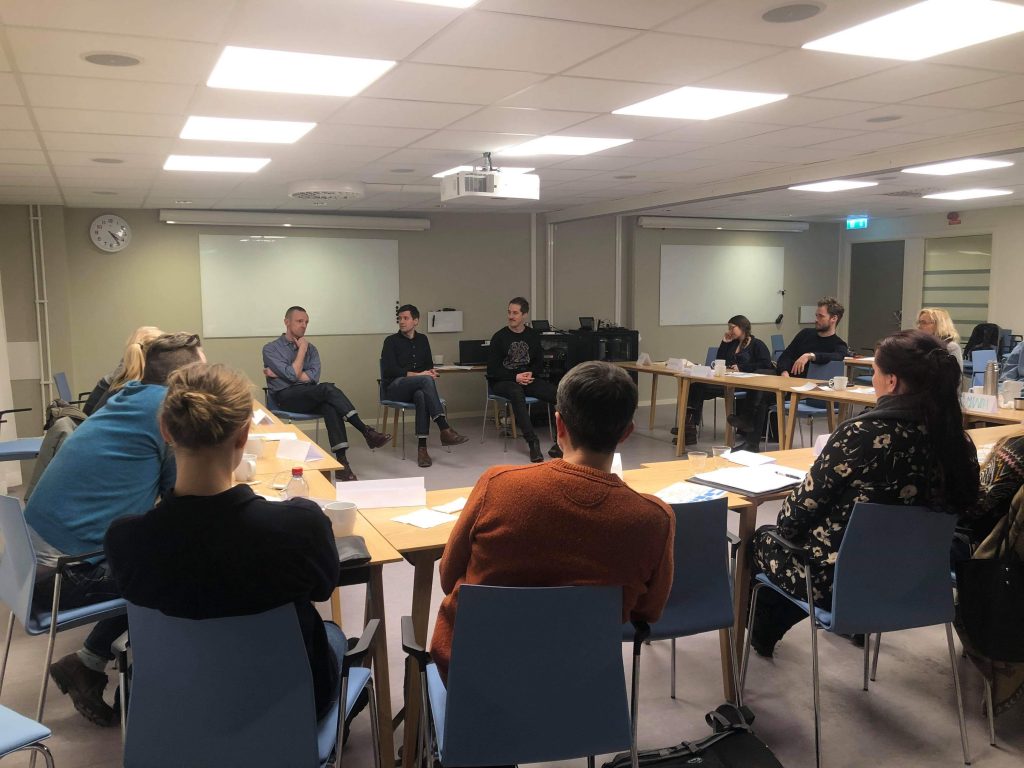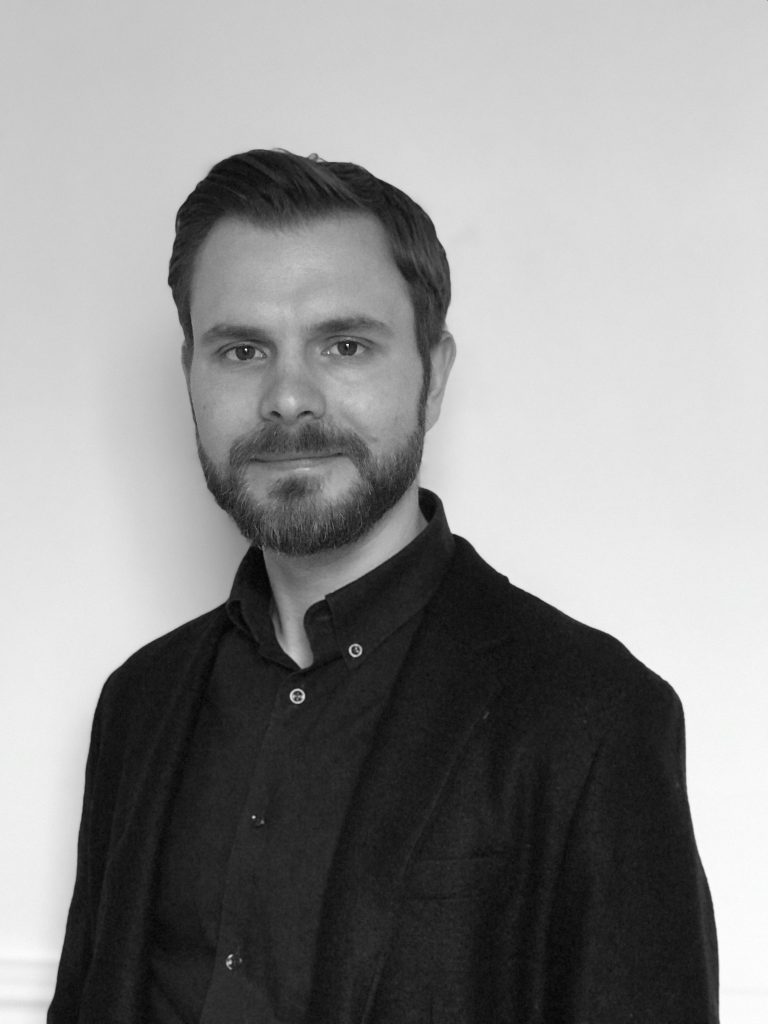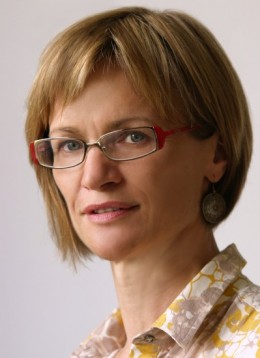In the midst of the CoVid-19 global pandemic we found some time for an interview with José Verpoort-Douw. José is a psychiatrist and ISTDP clinician in the Netherlands, running an ISTDP residential treatment center called “The ISTDP-House“. Before that, she was one of the lead clinicians at the state funded residential treatment center for personality disorders “De Viersprong”.
You’ve been managing the ISTDP-House for a few years now. How does it feel?
It feels great!
What’s the background of the ISTDP-House?
The idea behind the ISTDP-House was born in February 2016. At that time I was the last man standing – so to speak – in the Viersprong working with ISTDP. At that time this was mainly a daytime treatment program. The management had decided to stop offering ISTDP at the Viersprong all together and my colleagues – José Gelens, art therapist and Tineke Roks, social worker – were suddenly told to end the group we had in treatment at that time.

Coincidentally, at the time we had asked the group of patients to give their consent to make a film about the treatment program, to present in Amsterdam at the IEDTA 2016 conference. The patients enthusiastically had agreed upon this idea. They told us that their most important reason for this was that they desperately wanted to keep this treatment program alive. They said it was the best treatment they had received so far for their personality related problems. And because their privacy was at stake, we shared the decision of the management with them. So they would know that despite our film/our presentation, the program was about to stop.
To our surprise and our admiration this patient group decided to start a petition to prevent the Viersprong from ending the treatment program. Within no time the petition had over 400 signatures: ex-patients, their network, colleagues from near and afar and so on. The patients also went to the radio to talk about the treatment program and the plans to stop it. Following this, the Viersprong decided to cancel its plans of stopping the ISTDP program. They even decided to make it a larger program! But not with me, I thought… I had had enough.
We felt very supported and in a winning mood, of course, and Kees Cornelissen and me decided to pick up an old idea of ours: to start a private initiative for ISTDP treatment for patients with severe personality pathology. And two years later, in February 2018, we hired a house where the ISTDP-House was founded.
To be your own boss with no threats of managers thinking everything should be better, more innovative, more cost-efficient, more hip or more whatever. It feels great! And being able to adjust the program according to what you think is the best way forward. Patients are very satisfied with the program, just as they were at the Viersprong. Here’s our page on a site for health care reviews (it is in Dutch, I’m afraid).
“After previous treatments I came to the ISTDP-House a bit skeptical. I could not reach the pain that was so deeply hidden. But soon I felt listened to and that gave confidence. In a safe environment for me, the therapists peeled the onion to get to the core of the blocked pain. Together with the group and the openness and vulnerability of everyone, I was able to take great steps. Now that I am finishing this process, I have regained peace and positivity and will certainly recommend this treatment to everyone.”
– Patient review at Zorgkaartnederland.nl (our translation)
Why is ISTDP a good treatment of choice for personality disorders?
ISTDP is the best choice for personality problems for principally two reasons. The first one is that personality disorders are deeply rooted within the person and are built around feelings about very painful experiences in the past. To solve these problems and these patterns, patients not only need to think differently about these experiences, but also to feel differently about them. In order to get lifelong change.
The second reason is that psychotherapy has the best yield if the therapist believes firmly in the method. That is the reason that if I am to apply psychotherapy to patients with personality disorders – ISTDP is the only frame of reference I believe in – then this will be the only frame of reference in which I can be effective.
Did you manage to get state funding – as in De viersprong – or is this a completely private clinic where the patients pay themselves?
The Netherlands have a good insurance network for mental health. Thus, the treatment at the ISTDP-House is paid for by insurance companies. It’s not as much money as at De Viersprong or at other big mental health institutes, but since we have less costs we manage to make it viable. I mean, we have no managers, no financial department or Human Resources department and so on.
We also ask patients to contribute in the costs if they can afford it. Our policy is that everyone who needs this treatment must be able to acquire it. Of course people with personality problems are not the most successful people in work and financial issues! So, we are glad we don’t have to ask them to pay for it themselves in the case they cannot afford it.
The Netherlands have been pioneering both ISTDP residential treatment and ISTDP group therapy. Can you describe your model?
At the moment the ISTDP-House is the only place in the Netherlands where ISTDP is offered in a residential setting. As stated earlier personality disorders are deeply rooted and by having a very intensive treatment, within a group, it is possible to make a difference in a relatively short period of time.
Our treatment duration is one year. Within this year there’s a three-month period of daytime treatment, three days a week, in a group of eight patients. They all suffer from personality disorders, mainly Cluster C. By working in a group you have several advantages. For example, in a group patients are able to confront and support each other in a very effective way. Also, to self-attack is one thing, but to see someone else do this is something completely different. Patients want to shout: stop doing that to yourself! And then they realize: Oh my god. I do this to myself too! This experience in the group setting can be very powerful.

What else can you tell us about the structure of the program?
It’s a big and difficult question. Well- we have a three-day day-treatment. Patients have therapy from 9.30 – 16.30 each day, where everything is done within the group of 8 patients. This is the schedule:
Monday
9.30 – 10.30. Week opening. The patients report on how they have been working on their therapeutic focus during the last four days at home and what they plan to do for the next three days in the daytime treatment. At this point, two or three patients get a “focus sentence” from the staff: One sentence pinting out what we thought of the progress of the last period and the second sentence what we think they should focus on for the next period. The focus sentences are on a list in the living room of the patients for everyone to see.
10.45. Arts therapy.
12.30. Lunch with social workers – this is a therapy session too.
13.30. Physical therapy
15.00. Sociotherapy and closing of the day.
Tuesday and Wednesday
9.30 – 12.00. The day starts with two individual sessions with group attending, followed by a group session of 45 minutes. A social worker or arts therapist is attending as a co-therapist.
12.30. Lunch
13.30. Arts therapy
15.00. Sociotherapy.
At the end of the Wednesday we make plans for how to work on the respective focusses during the next four days in their own environment.
I hope this gives you an overall idea of the structure. The pressure to change your patterns is high.
What are some of the main challenges with the residential format?
Personally I think the biggest challenge is the portrayal of anger towards other group members. As a lot of patients have run into real violence towards themselves as a child, this can be very disturbing and hard to observe. But we usually find a way to handle this, and especially the transfer after the violence helps everyone put things back in perspective. Also it helps group members to realize and accept that they themselves have these primitive feelings inside them as well.
The differences in the ego-adaptive capacity of the different group members is something where much work needs to be done. But patients are very well capable of understanding and accepting that what works for one patients might be too difficult or too disturbing for someone else, and they support each other in doing what is best for them. Most of the time I see little challenges and a lot of opportunities!
Do you collect data from your patients or do other kinds of research? A big obstacle to implementing ISTDP in Sweden is the lack of robust evidence, so it’s always interesting to see data from the real world.
Sure we do! We are obliged to do so, using ROM, as the insurance refuses to pay if you don’t have enough questionnaires filled out by the patients (you might read the irony in this sentence). But we decided to take this obligation serious. This is a rather expensive treatment, and we are a very small company, so we see it as our duty to prove that we are worth every penny (euro cent, that is). We are having some trouble to translate our ROM-outcomes to an effect size.
The most striking results we have at this moment is the patient satisfaction measure (CQi-AMB). We aim at a higher score than 7 on two questions: did you reach your treatment goals? and would you recommend this treatment to patients with similar symptoms? On the first question we average almost an 8 and on the second question almost a 9. This makes us proud – but it might not be what you need as “robust evidence”. We’re in the process of using the BSI to calculate effect sizes and so on.
At the Amsterdam presentation you showed a “head-on collision in concert”, with the patients helping the therapists out. Can you explain what that means? Is this something that you still encourage?
The concept is simple. Head-on collision in concert means that you and the patients of the group help one patient confront his or her resistance. We still do it. Do we encourage it? Well, it depends. On the one hand it depends a lot on the skills of the therapists and also – which might sound strange to some – on the skills of the patients. Sometimes the patients are very skilled in confronting each other on a moment-to-moment basis – sometimes not so much, which can be rather unhelpful and frustrating. It is not a technique you can find in the literature, as far as I know, but it is something I invented – in concert so to say – with the two colleagues you saw me with in Amsterdam: Tineke Roks and Josephine Gelens.
A while back – before this whole Corona experience – we had a patient who started crying whenever she was angry. This was pointed out to her in the individual sessions, but she had trouble admitting it. The group picked it up and each time she started crying (except of course, when there was real sadness!) the group asked her to stop crying and see together how she had just perceived the individual who “made her” cry. After a few times she began to see the pattern and it helped her a lot.
Moving on, what are some of the things you are struggling to learn as a therapist at this moment?
I am struggling not to get involved in rationalization instead of confrontation, clarification and challenge! Also I tend to be the hardest working person in the therapeutic process, giving the patient the opportunity to lay back and see how very well I am trying to help them. So I struggle to improve this!
Sometimes the group of patients help me out with this. After the individual session – the patient group attends the individual sessions for joint learning – they sometimes are a little bit angry at the patient. They say: José was working so hard for you and you did nothing on behalf of yourself, that really annoyed me. Then I know. I did it again! I was overworking. So working in a residential setting is a very educational process for everyone, not only for the patients.
What do you envision for the future of ISTDP?
Dreaming about the future… I would really like to think about the ISTDP-House concept becoming a standard approach, applied all over the world for patients with personality disorders. I really would like that!
ISTDP has been implemented and evaluated in residential settings in a few places around the world. Results from De Viersprong in the Netherlands have been reported in this book by Kees Cornelissen, the Drammen clinic in southern Norway has been covered in several published papers while data from the Bridges Rehab in Arizona was published last year. All of this data is very encouraging, but high-quality RCT-studies are needed to draw definitive conclusions about the effects of the model.
If you liked this José Verpoort-Douw interview you might be interested in our other interviews. Concerning ISTDP clinics and group treatment, we talked to Kristy Lamb a while ago who’s running an ISTDP treatment center in California. You can find all of our english content here. Below you’ll find our latest interviews:
- Niklas Rasmussen: “Det är så lätt att tappa bort sig själv i ISTDP”
- Maury Joseph: “How much does our theory shape the patient’s experience?”
- Ola Berge: “ISTDP erbjuder ett perspektiv som saknas i psykiatrin”
- Johannes Kieding: “ISTDP is uniquely vulnerable to misalliances”
- Jonathan Entis: “Defiance is the single most important defense”







